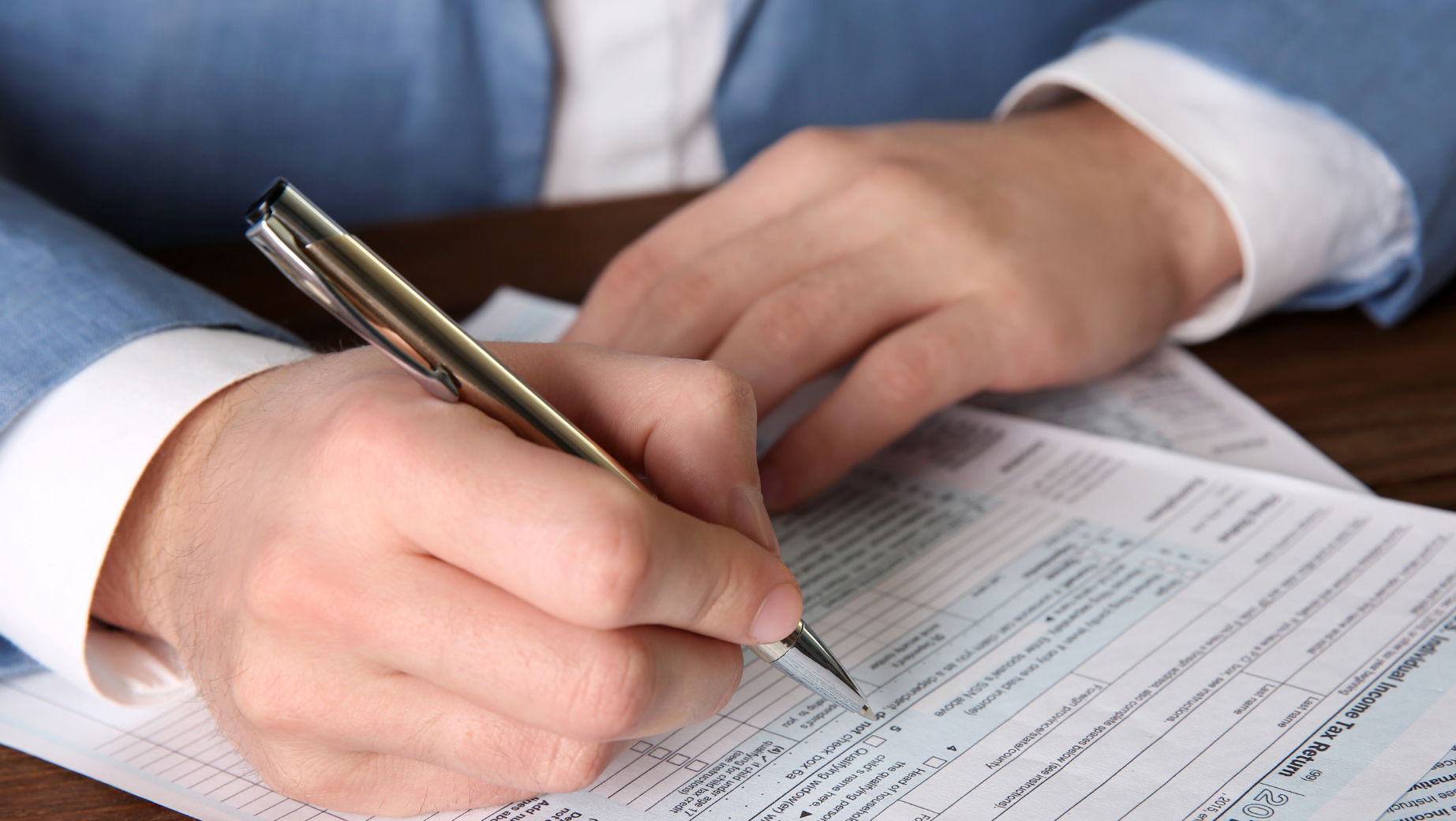Appoint an Approved Auditor
As a trustee of a Self Managed Super Fund, you are required to appoint an approved auditor to audit your fund each year, at lease 30 days before the due date of the Self Managed Super Fund annual return. Your auditor is required to:
– Examine your fund’s financial statements
– Assess your fund’s overall compliance with the super law
You should appoint your auditor early to allow enough time to do the audit, and lodge the Self Managed Super Fund annual return on time.
Generally, an approved auditor may be a registered company auditor, or a member of fellow of one of the following professional organisations.
| Professional organisation | Manner of association |
|---|---|
| CPA Australia | Member |
| The Institute of Chartered Accountants in Australia | Member |
| National Institute of Accountants | Member |
| Association of Taxation and Management Accountants | Member or Fellow |
| National Tax and Accountants Association Ltd | Fellow |
Before an auditor can start to audit, you or your Self Managed Super Fund professional need to prepare information about your accounts and transactions for the previous financial year. The information is then sent to the approved auditor.
Your approved auditor needs to:
– Provide you with an audit report before the due date of the Self Managed Super Fund annual return.
– Bring to your attention and the attention of trustees, any concerns about your fund’s financial position or its compliance with the super law.
– Report to the ATO any contravention of the super law that they may identify during an audit.
If your auditor identifies a contravention, you need to take immediate steps to rectify the contravention.
You can do everything to fulfil your requirements except audit your fund. You need to appoint an auditor (who is independent) to do this.
Record Keeping Requirements
The ATO have identified poor and inadequate record keeping as a problem for Self Managed Super Funds. You need to keep the following records for a minimum of five years:
– Accurate and accessible accounting records that explain the transactions and financial position of your Self Managed Super Fund.
– An annual operating statement and an annual statement of your Self Managed Super Funds financial position.
– Copies of all Self Managed Super Fund annual returns lodged.
– Copies of any other statements you are required to lodge with us, or provide to other super funds.
You need to keep the following records for a minimum of 10 years:
– Minutes of trustee meetings and decisions (where matters affecting your fund were discussed).
– Records of all changes of trustees.
– Trustee declarations recognising the obligations and responsibilities for any trustee, or director of a corporate trustee, appointed after 30 June 2007.
– Members’ written consent to be appointed as trustees.
– Copies of all reports given to members.
Once you’ve established your fund, you are legally required to:
– Lodge a Self Managed Super Fund annual return.
– Pay the supervisory levy.
– Have an audit report prepared.
Don’t forget that income tax records keeping requirements also need your attention. Especially documents on deductions, CGT and losses.
Notifying the ATO If There Is A Change
As a trustee of a Self Managed Super Fund, you need to notify the ATO within 28 days if there is a change in the following:
– Trustees.
– Directors of the corporate trustee.
– Members.
– Contact details (contact person, phone and fax numbers).
– Address (postal, registered or address for service of fund notices).
If you change the structure of your Self Managed Super Fund, this may result in your fund no longer meeting the definition of a Self Managed Super Fund. For example, if you:
– Admit a new member, increasing membership of your Self Managed Super Fund to more than four.
– Admit a new member without that member being an appointed trustee.
To tell the ATO about changes to your Self Managed Super Fund, either:
– Use the ATO online service at www.abr.gov.au if you have a primary digital certificate.
– Lodge a Change of details for superannuation entities (NAT 3036) form.
You can’t tell the ATO about a change in the structure of an SMSF by lodging the SMSF annual return.
Rogerson Kenny Business Accountants Melbourne can assist you with your accounting and auditing requirements. If you would like to appoint Rogerson Kenny Business Accountants as your approved auditor, or would like to discuss this topic further, call us on (03) 9802 2533.
Members Contributions Information
From the 2007-08 financial year, member contributions information for each member is reported to your Self Managed Super Fund annual return (under sections F and/or G) rather than in separate member contributions statements.
For every financial year that your Self Managed Super Fund operates, you need to report all contributions you receive for each member in the Self Managed Super Fund annual return. You need to include contributions rolled into the Self Managed Super Fund and reported to you on the Rollover benefits statement (NAT 70944). You need to be able to characterise contributions correctly in your Self Managed Super Fund annual return.
Members contributions information is used to:
– Work out if your members are entitled to a super co-contribution and where to pay any entitlements
– Work out if your members have exceeded their contributions cap and, if so, assess their excess contributions tax liability
– Check employer compliance with the super guarantee
Rollover Benefits Statement
When rolling over benefits and current year contributions, the trustee needs to complete a Rollover benefits statement (NAT 70944) and pass this form, along with the benefits being rolled over, to the receiving fund(s) within seven days of paying the rollover. A copy of this statement needs to be given to the member whose benefits are being rolled over within 30 days of making the payment.
The Rollover benefits statement allows the receiving fund to:
– Apply the correct income tax treatment to the components rolled over
– Maintain the preservation status of the benefits rolled over
Report correctly to us, on the Member contributions statement or Self Managed Super Fund annual return, any contributions included in the rollover that were made in the same financial year as the payment occurred. The trustee needs to ensure the rollover is to a complying fund.
Trustee Declaration
If you are a new trustee (or new directors of corporate trustees) appointed from 1 July 2007, you need to complete and sign the trustee declaration within 21 days of becoming a trustee, or a director of the corporate trustee.
Once you’ve done this, keep it with your records. You don’t need to send it to the ATO.
Supervisor Levy
Self Managed Super Funds need to pay the $150 supervisory levy every year to us which is included in the Self Managed Super Fund annual return.
For the 2008-09 financial year and later financial years Self Managed Super Funds are sent a reminder letter notifying them of their lodgement and payment due dates. For Self Managed Super Funds the balancing date is 30 June 2009 and the statutory date for payment is 1 December 2009, however for most Self Managed Super Funds a later payment due date will apply under the tax agent lodgment program.
Taxation
You need to understand Self Managed Super Fund tax requirements. Your tax responsibilities should not be left solely with any of the following:
– Tax Agents
– Accountants
– Super fund administrators
– Financial planners
The ATO want to ensure all trustees are aware of how the tax laws may affect their SMSFs and consequences of non-compliance with the tax laws.
Appoint an Approved Auditor
As a trustee of a Self Managed Super Fund, you are required to appoint an approved auditor to audit your fund each year, at lease 30 days before the due date of the Self Managed Super Fund annual return. Your auditor is required to:
– Examine your fund’s financial statements
– Assess your fund’s overall compliance with the super law
You should appoint your auditor early to allow enough time to do the audit, and lodge the Self Managed Super Fund annual return on time.
Generally, an approved auditor may be a registered company auditor, or a member of fellow of one of the following professional organisations.
| Professional organisation | Manner of association |
|---|---|
| CPA Australia | Member |
| The Institute of Chartered Accountants in Australia | Member |
| National Institute of Accountants | Member |
| Association of Taxation and Management Accountants | Member or Fellow |
| National Tax and Accountants Association Ltd | Fellow |
Before an auditor can start to audit, you or your Self Managed Super Fund professional need to prepare information about your accounts and transactions for the previous financial year. The information is then sent to the approved auditor.
Your approved auditor needs to:
– Provide you with an audit report before the due date of the Self Managed Super Fund annual return.
– Bring to your attention and the attention of trustees, any concerns about your fund’s financial position or its compliance with the super law.
– Report to the ATO any contravention of the super law that they may identify during an audit.
If your auditor identifies a contravention, you need to take immediate steps to rectify the contravention.
You can do everything to fulfil your requirements except audit your fund. You need to appoint an auditor (who is independent) to do this.
Record Keeping Requirements
The ATO have identified poor and inadequate record keeping as a problem for Self Managed Super Funds. You need to keep the following records for a minimum of five years:
– Accurate and accessible accounting records that explain the transactions and financial position of your Self Managed Super Fund.
– An annual operating statement and an annual statement of your Self Managed Super Funds financial position.
– Copies of all Self Managed Super Fund annual returns lodged.
– Copies of any other statements you are required to lodge with us, or provide to other super funds.
You need to keep the following records for a minimum of 10 years:
– Minutes of trustee meetings and decisions (where matters affecting your fund were discussed).
– Records of all changes of trustees.
– Trustee declarations recognising the obligations and responsibilities for any trustee, or director of a corporate trustee, appointed after 30 June 2007.
– Members’ written consent to be appointed as trustees.
– Copies of all reports given to members.
Once you’ve established your fund, you are legally required to:
– Lodge a Self Managed Super Fund annual return.
– Pay the supervisory levy.
– Have an audit report prepared.
Don’t forget that income tax records keeping requirements also need your attention. Especially documents on deductions, CGT and losses.
Notifying the ATO If There Is A Change
As a trustee of a Self Managed Super Fund, you need to notify the ATO within 28 days if there is a change in the following:
– Trustees.
– Directors of the corporate trustee.
– Members.
– Contact details (contact person, phone and fax numbers).
– Address (postal, registered or address for service of fund notices).
If you change the structure of your Self Managed Super Fund, this may result in your fund no longer meeting the definition of a Self Managed Super Fund. For example, if you:
– Admit a new member, increasing membership of your Self Managed Super Fund to more than four.
– Admit a new member without that member being an appointed trustee.
To tell the ATO about changes to your Self Managed Super Fund, either:
– Use the ATO online service at www.abr.gov.au if you have a primary digital certificate.
– Lodge a Change of details for superannuation entities (NAT 3036) form.
You can’t tell the ATO about a change in the structure of an SMSF by lodging the SMSF annual return.
Rogerson Kenny Business Accountants Melbourne can assist you with your accounting and auditing requirements. If you would like to appoint Rogerson Kenny Business Accountants as your approved auditor, or would like to discuss this topic further, call us on (03) 9802 2533.
Self Managed Super Fund Annual Return
All Self Managed Super Funds need to lodge an Self Managed Super Fund annual return with the ATO each year, in order to:
– Report income tax
– Report super regulatory information
– Report member contributions
– Pay the supervisory levy
The lodgment and payment date for all Self Managed Super Funds that are not new registrants and prepare their own Self Managed Super Fund annual return is 31 October each year. For all new registrants the lodgment date for their Self Managed Super Fund annual return is 28 February.
The lodgment and payment dates for all tax agents who prepare the annual return for Self Managed Super Funds are according to the tax agent lodgment program.
All SMSFs are required to have the financial accounts and statements audited each year by an approved auditor.
You can’t lodge the Self Managed Super Fund annual return until after the audit of your Self Managed Super Fund has been finalised, as information from the audit report is required to complete the regulatory information in the return.
The Self Managed Super Fund annual return is for the 2007-08 financial year and onwards. For all previous financial years, trustees should report on Fund Income tax and regulatory return (NA0658).
Failure to lodge your Self Managed Super Fund annual return by the due date can result in penalties and/or the loss of your Self Managed Super Funds tax concessions.
Members Contributions Information
From the 2007-08 financial year, member contributions information for each member is reported to your Self Managed Super Fund annual return (under sections F and/or G) rather than in separate member contributions statements.
For every financial year that your Self Managed Super Fund operates, you need to report all contributions you receive for each member in the Self Managed Super Fund annual return. You need to include contributions rolled into the Self Managed Super Fund and reported to you on the Rollover benefits statement (NAT 70944). You need to be able to characterise contributions correctly in your Self Managed Super Fund annual return.
Members contributions information is used to:
– Work out if your members are entitled to a super co-contribution and where to pay any entitlements
– Work out if your members have exceeded their contributions cap and, if so, assess their excess contributions tax liability
– Check employer compliance with the super guarantee
Rollover Benefits Statement
When rolling over benefits and current year contributions, the trustee needs to complete a Rollover benefits statement (NAT 70944) and pass this form, along with the benefits being rolled over, to the receiving fund(s) within seven days of paying the rollover. A copy of this statement needs to be given to the member whose benefits are being rolled over within 30 days of making the payment.
The Rollover benefits statement allows the receiving fund to:
– Apply the correct income tax treatment to the components rolled over
– Maintain the preservation status of the benefits rolled over
Report correctly to us, on the Member contributions statement or Self Managed Super Fund annual return, any contributions included in the rollover that were made in the same financial year as the payment occurred. The trustee needs to ensure the rollover is to a complying fund.
Trustee Declaration
If you are a new trustee (or new directors of corporate trustees) appointed from 1 July 2007, you need to complete and sign the trustee declaration within 21 days of becoming a trustee, or a director of the corporate trustee.
Once you’ve done this, keep it with your records. You don’t need to send it to the ATO.
Supervisor Levy
Self Managed Super Funds need to pay the $150 supervisory levy every year to us which is included in the Self Managed Super Fund annual return.
For the 2008-09 financial year and later financial years Self Managed Super Funds are sent a reminder letter notifying them of their lodgement and payment due dates. For Self Managed Super Funds the balancing date is 30 June 2009 and the statutory date for payment is 1 December 2009, however for most Self Managed Super Funds a later payment due date will apply under the tax agent lodgment program.
Taxation
You need to understand Self Managed Super Fund tax requirements. Your tax responsibilities should not be left solely with any of the following:
– Tax Agents
– Accountants
– Super fund administrators
– Financial planners
The ATO want to ensure all trustees are aware of how the tax laws may affect their SMSFs and consequences of non-compliance with the tax laws.
Appoint an Approved Auditor
As a trustee of a Self Managed Super Fund, you are required to appoint an approved auditor to audit your fund each year, at lease 30 days before the due date of the Self Managed Super Fund annual return. Your auditor is required to:
– Examine your fund’s financial statements
– Assess your fund’s overall compliance with the super law
You should appoint your auditor early to allow enough time to do the audit, and lodge the Self Managed Super Fund annual return on time.
Generally, an approved auditor may be a registered company auditor, or a member of fellow of one of the following professional organisations.
| Professional organisation | Manner of association |
|---|---|
| CPA Australia | Member |
| The Institute of Chartered Accountants in Australia | Member |
| National Institute of Accountants | Member |
| Association of Taxation and Management Accountants | Member or Fellow |
| National Tax and Accountants Association Ltd | Fellow |
Before an auditor can start to audit, you or your Self Managed Super Fund professional need to prepare information about your accounts and transactions for the previous financial year. The information is then sent to the approved auditor.
Your approved auditor needs to:
– Provide you with an audit report before the due date of the Self Managed Super Fund annual return.
– Bring to your attention and the attention of trustees, any concerns about your fund’s financial position or its compliance with the super law.
– Report to the ATO any contravention of the super law that they may identify during an audit.
If your auditor identifies a contravention, you need to take immediate steps to rectify the contravention.
You can do everything to fulfil your requirements except audit your fund. You need to appoint an auditor (who is independent) to do this.
Record Keeping Requirements
The ATO have identified poor and inadequate record keeping as a problem for Self Managed Super Funds. You need to keep the following records for a minimum of five years:
– Accurate and accessible accounting records that explain the transactions and financial position of your Self Managed Super Fund.
– An annual operating statement and an annual statement of your Self Managed Super Funds financial position.
– Copies of all Self Managed Super Fund annual returns lodged.
– Copies of any other statements you are required to lodge with us, or provide to other super funds.
You need to keep the following records for a minimum of 10 years:
– Minutes of trustee meetings and decisions (where matters affecting your fund were discussed).
– Records of all changes of trustees.
– Trustee declarations recognising the obligations and responsibilities for any trustee, or director of a corporate trustee, appointed after 30 June 2007.
– Members’ written consent to be appointed as trustees.
– Copies of all reports given to members.
Once you’ve established your fund, you are legally required to:
– Lodge a Self Managed Super Fund annual return.
– Pay the supervisory levy.
– Have an audit report prepared.
Don’t forget that income tax records keeping requirements also need your attention. Especially documents on deductions, CGT and losses.
Notifying the ATO If There Is A Change
As a trustee of a Self Managed Super Fund, you need to notify the ATO within 28 days if there is a change in the following:
– Trustees.
– Directors of the corporate trustee.
– Members.
– Contact details (contact person, phone and fax numbers).
– Address (postal, registered or address for service of fund notices).
If you change the structure of your Self Managed Super Fund, this may result in your fund no longer meeting the definition of a Self Managed Super Fund. For example, if you:
– Admit a new member, increasing membership of your Self Managed Super Fund to more than four.
– Admit a new member without that member being an appointed trustee.
To tell the ATO about changes to your Self Managed Super Fund, either:
– Use the ATO online service at www.abr.gov.au if you have a primary digital certificate.
– Lodge a Change of details for superannuation entities (NAT 3036) form.
You can’t tell the ATO about a change in the structure of an SMSF by lodging the SMSF annual return.
Rogerson Kenny Business Accountants Melbourne can assist you with your accounting and auditing requirements. If you would like to appoint Rogerson Kenny Business Accountants as your approved auditor, or would like to discuss this topic further, call us on (03) 9802 2533.







